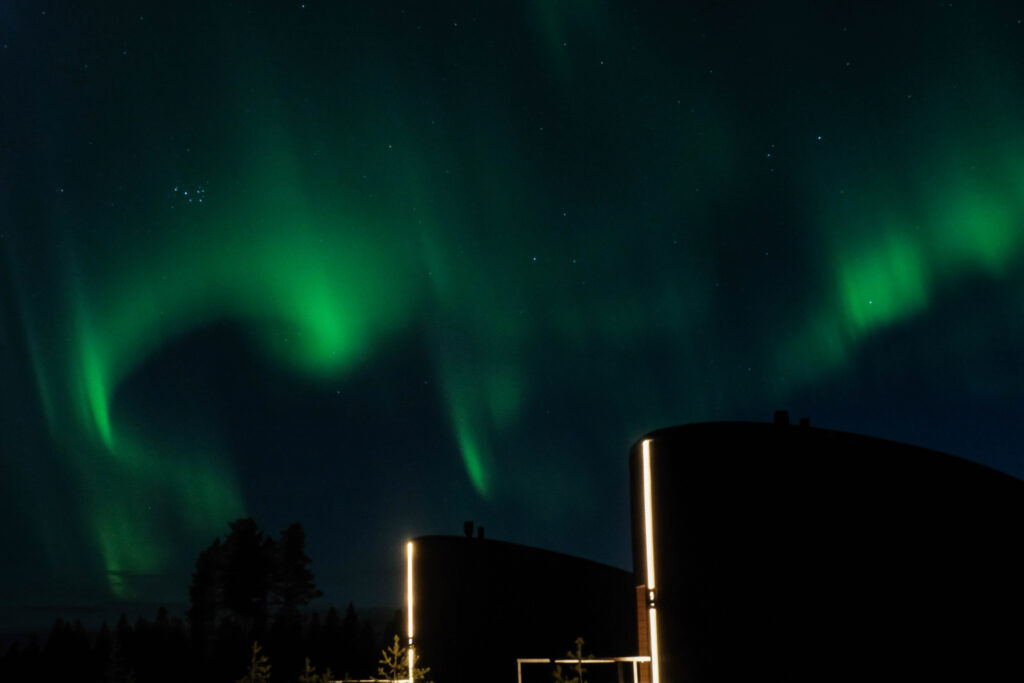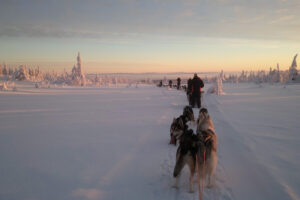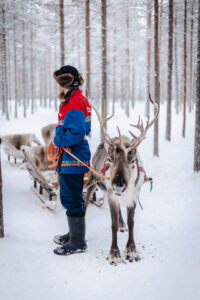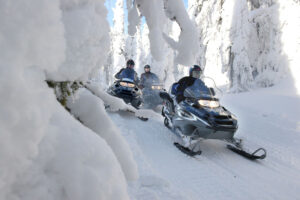The best time to see Northern Lights in Lapland is from September to March, with peak viewing during the darkest months of December through February. During this Aurora viewing season, Finnish Lapland offers extended darkness hours combined with optimal geomagnetic conditions. Clear winter nights provide the perfect backdrop for witnessing the Aurora Borealis dancing across Arctic skies, though visibility depends on multiple factors including weather patterns and solar activity.
When is the best time to see Northern Lights in Lapland?
The Northern Lights season in Lapland runs from September through March, with the darkest months between December and February offering the most reliable viewing opportunities. During these peak winter months, darkness lasts up to 20 hours daily in Finnish Lapland, providing extended windows for Aurora Borealis observation. The combination of prolonged darkness, stable weather patterns, and heightened solar activity cycles creates ideal conditions for witnessing this natural phenomenon.
September and March mark the shoulder seasons, offering milder temperatures whilst still providing adequate darkness for Northern Lights viewing. These months can be particularly rewarding as the autumn and spring equinoxes often correlate with increased geomagnetic activity. However, the weather tends to be more variable during these transition periods.
December through February represents the heart of the Northern Lights Lapland season. The extreme darkness of polar winter means you can potentially observe the Aurora from late afternoon through early morning. The crisp, clear air of deep winter often produces the most vibrant displays, with temperatures dropping well below freezing to create stable atmospheric conditions. At our location along Lake Livo, the pristine wilderness setting minimises light pollution, enhancing your chances of witnessing spectacular Aurora displays from the comfort of our glass igloo accommodation.
Planning your visit during these optimal months means you can combine Northern Lights viewing with authentic winter activities. The landscape transforms into a snow-covered wonderland, perfect for husky sledding, snowmobile adventures, and experiencing traditional Lapland culture whilst waiting for the evening Aurora displays.
What factors affect Northern Lights visibility in Finnish Lapland?
Solar activity and geomagnetic storms are the primary drivers of Aurora Borealis displays. The Northern Lights occur when charged particles from the sun interact with Earth’s magnetic field, creating the characteristic green, pink, and purple curtains of light. Solar activity follows an 11-year cycle, though Aurora displays can occur at any time when geomagnetic conditions are favourable.
Cloud cover and weather conditions play a crucial role in Northern Lights viewing success. Even during periods of strong Aurora activity, overcast skies will obscure the display completely. Finnish Lapland’s continental climate brings relatively stable winter weather, though conditions can change rapidly. Clear, cold nights offer the best viewing opportunities, whilst snowfall or heavy cloud cover will prevent observation regardless of Aurora strength.
Light pollution significantly impacts visibility, which is why remote locations like ours near Lake Livo provide superior viewing conditions. Urban areas and even small towns can create enough ambient light to diminish the Aurora’s appearance. The wilderness setting of Finnish Lapland offers naturally dark skies, allowing even subtle Aurora displays to be visible.
Moon phases influence viewing conditions more subtly. A full moon creates additional natural light that can wash out fainter Aurora displays, whilst new moon periods offer the darkest skies. However, a bright moon can also illuminate the snowy landscape beautifully, creating a magical atmosphere even if the Northern Lights are less vivid.
These factors interact in complex ways, which is why Northern Lights viewing can never be guaranteed, even during peak season. Weather forecasts, Aurora predictions, and local knowledge all help maximise your chances, but nature ultimately determines when the lights will dance.
How many nights should you stay in Lapland to see the Northern Lights?
We recommend staying 3 to 5 nights to significantly increase your probability of witnessing the Northern Lights in Lapland. Statistical patterns show that whilst Aurora activity occurs frequently during winter months, weather variability means clear skies aren’t guaranteed on any single night. Multiple nights dramatically improve your odds of experiencing at least one spectacular display.
A three-night stay provides a reasonable balance between travel investment and viewing probability. This duration allows for weather patterns to shift, increasing the likelihood of encountering clear skies during an active Aurora period. You’ll also have time to settle into the rhythm of Arctic evenings, learning when and where to watch for the lights without feeling rushed.
Five-night stays offer even better odds and allow you to relax into the experience rather than anxiously watching forecasts. This extended duration means you can enjoy daytime activities without exhausting yourself, then remain alert for evening Aurora viewing. The longer stay also accommodates the natural unpredictability of both weather and solar activity, giving you multiple opportunities to witness different types of displays.
For couples planning a bucket-list Northern Lights experience, the multi-night approach reduces the disappointment risk whilst allowing you to fully immerse yourselves in Lapland’s winter magic. Our glass igloo accommodation enables comfortable Aurora watching from your bed, meaning you won’t miss displays that occur during the night. You can simply gaze upward through the expansive ceiling windows, remaining warm and comfortable whilst the Northern Lights perform overhead.
This duration also allows you to balance Northern Lights viewing with other authentic Arctic experiences, creating a complete Lapland adventure rather than a single-focus trip. The combination of activities and multiple viewing opportunities ensures a fulfilling experience regardless of Aurora conditions on any particular night.
What time of night are Northern Lights most visible in Lapland?
The Northern Lights in Lapland are most commonly visible between 9 PM and 2 AM, though displays can occur any time during darkness hours. This peak window corresponds with typical geomagnetic activity patterns and offers a practical balance between evening comfort and optimal viewing conditions. During the darkest winter months, Aurora displays may begin as early as 6 PM and continue until dawn.
Aurora activity doesn’t follow a strict schedule, as it depends on when solar particles reach Earth’s magnetic field. However, many observers notice increased activity during the late evening and midnight hours. This timing works well for visitors, allowing you to enjoy dinner and evening relaxation before the prime viewing period begins.
The viewing window varies by season within the Northern Lights period. In September and March, darkness arrives later and ends earlier, concentrating Aurora viewing into a shorter timeframe. December and January offer extended darkness, meaning you might observe the lights during what feels like late afternoon or early morning by the clock.
Planning your evening around these patterns helps balance comfort with opportunity. Our glass igloo accommodation addresses this perfectly, allowing you to remain warm and comfortable whilst maintaining constant sky visibility. You can relax inside with a cup of tea, periodically checking the sky, then simply watch from bed if Aurora activity begins. The electric fireplace creates a cosy atmosphere whilst you wait, and the clear glass ceiling means you won’t miss anything.
For the most dedicated Aurora hunters, staying alert throughout the night increases your chances of witnessing the most spectacular displays. However, the physical demands of Arctic winter and daytime activities mean most visitors appreciate accommodation that allows passive viewing without standing outside in temperatures that can drop below minus 20 degrees Celsius.
Setting realistic expectations about timing helps you enjoy the experience rather than feeling anxious. The Northern Lights appear when conditions align, and being prepared to watch during the peak evening hours whilst remaining comfortable gives you the best chance of witnessing this extraordinary natural phenomenon during your Lapland adventure. Contact us to book your stay and maximize your Northern Lights viewing opportunities.
